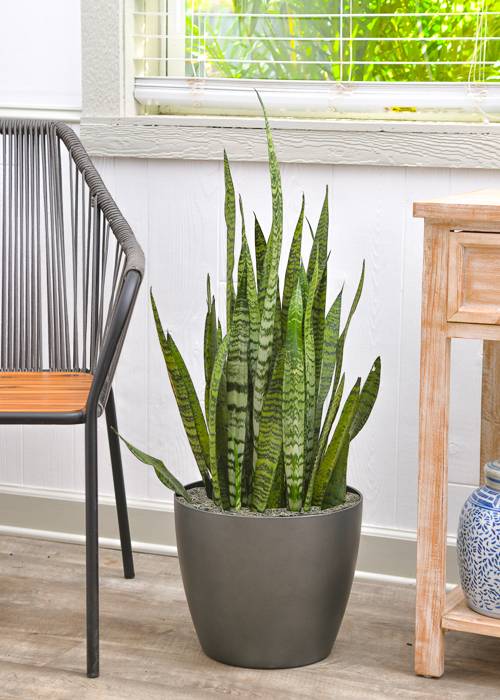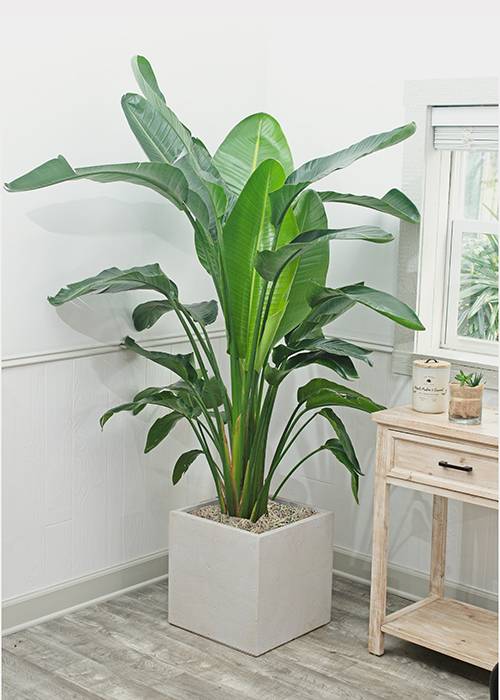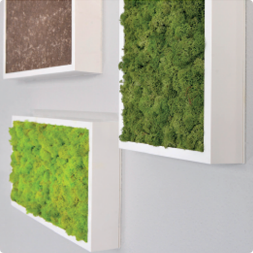How Lighting Affects Your Plants
Whether you have a green thumb or a brown thumb, everyone knows that plants need light to grow. That is why it is one of the biggest factors to consider when raising your plant babies. Without light, plants cannot go through photosynthesis and produce the energy that is needed to grow happy and healthy.
When plants do not have enough light, they stop producing the green pigment called chlorophyll and can turn pale or yellowish. They may also drop their leaves or fail to produce flower buds when they are lacking the proper sunbeams. On the other hand, plants that catch too many rays risk scorched or bleached leaves and drying out. Let’s take a closer look at what kind of lighting your home gives off, and which plants work best with each type!
What Sort of Natural Lighting Does Your Home Have?
If you are looking to add a new plant to your home, it is important to first know how much natural light you are working with. When it comes to light, the direction your windows face will determine the quality and quantity of natural light your plants will get. Unsure of which way your windows face? Your phone has a nifty compass app that can tell you right away.
South Facing: A south-facing window offers bright indirect light to full sun in the afternoon, and is best for plants that require a full range of light throughout the day. This window will be your go-to for bright-light plants who love to soak in the sun.
North Facing: The north-facing window is the least ideal for your plant friends as it receives extremely small amounts of natural light. Low-light plants can thrive near these windows, but be aware that direct sunlight does not come through at any point.
East Facing: If your window is facing east, do not expect to see much intense sunlight shining through it. It does catch some semi-bright indirect light, so these windows are a great spot for low- to medium-light houseplants.
West Facing: Your west-facing window receives good light from the afternoon sun, seeing some direct sun getting through at the end of the day as well. This window misses the hottest rays of the day and has minimal direct sunlight making it ideal for most houseplants.
You also need to factor in seasonality when assessing light through your windows. In the northern hemisphere, the light will remain fairly consistent through east- and west-facing windows; but through south- and north-facing windows, the light can vary greatly. During the summer, you might expect to get the most light through your south-facing window, but that is not always true. The sun can get very high in the sky and eves and roof soffits can block light. In the winter, however, the sun slips lower in the sky and light can penetrate at an angle that provides greater brightness and resulting in photosynthetic activity.
On the north side of the house, it works in reverse where the mid-summer sun can actually be brighter. The impact of seasonal light changes varies, too, depending on how far north or south you live. Lastly, on seasonality, trees planted in your outside landscape can and will impact light penetration as the sun moves north and south in the sky.
It is also a good idea to know about the different types of lights that our plants grow best in. Bright direct light usually means a plant thrives on a windowsill or any spot near it where the sunrays are constant. Bright indirect light will be close to a window, but not technically on the windowsill or in the direct sunbeams. Medium-light means the plant can be in a semi-shaded corner or spot away from the window, but it still gets that filtered light at certain parts of the day. Low-light plants are your most easy-going plant and can be placed basically anywhere! As long as they get some (even artificial) light, and you do not totally forget about them, they will be fine.
Best Houseplants for Low Light
Just because you have minimal light in your home does not mean that you can not be a proud plant parent! While it might limit your options some, there’s still a wide range of plants that will love your low to medium light space.
ZZ Plant: These plants can survive basically anywhere that there is a crumb of sunlight. ZZ plants, or as we have nicknamed it the EZ-ZZ, can be sustained in artificial light, are extremely low-maintenance, and require very little water- seriously, it can go up to 2 whole months without getting thirsty!
Janet Craig: No, not Jenny Craig- Janet Craig. This plant’s large, sword-shaped leaves capture even the slightest bit of light, making it an ideal choice for a shadier room or office. It’s even won the honor of being our most low-light plant offering!
Snake Plant: While this plant thrives in bright light conditions, it will continue to grow in low light environments for a very long time. We’ve coined it the easiest houseplant for a forgetful plant parent, making it a great choice for beginners or to be put in a windowless office.
Lisa Cane: This plant has one of the lowest light requirements, making it a top performer in low-light, tight spaces. The Lisa Cane looks elegant near a window or in a corner with only filtered light.
Giganta Plant: Close relative to the Corn Plant, the Giganta is multi-trunked but ALL foliage. This beauty does well in low to medium-light situations and maintains its characteristic large leaves with yellow variegation year-round.

Best Houseplants for Bright Light
If you are working with south- or west-facing windows that offer tons of natural light, we have just the list for you! Consider these light-loving plants when choosing a new addition for those bright, sunny spots.
Fiddle Leaf Fig: The Fiddle Leaf Fig is a real showstopper in any room, as long as it is a well-lit one. This plant requires the brightest of lights to maintain its big, violin-shaped leaves that have made it one of our trendiest plants offered.
Ficus Microcarpa: This Ficus plant is not only related to the Fiddle Leaf Fig, but also requires just as much light as its brother. The Ficus Microcarpa does great on a patio or lanai in the warmer months, and it is a good idea to twist your Ficus once a week to ensure that light is reaching all of its gorgeous sides.
Majesty Palm: This native of Madagascar grows best in filtered indirect light, adding a touch of the tropics to any spot it inhabits. If put outside on a screened patio, the majestic Majesty Palm will grow for a very long time AND impress your neighbors.
White Bird of Paradise: This interior-design classic needs a lot of sunshine to keep growing, preferably near an east- or south-facing window. Shine some light on its long, dramatic, arching leaves and let its silhouette show off too.
Areca Palm: The Areca Palm, or Butterfly Palm, adds a tropical splash to building entrances or home patios and require a lot of light. So much light, in fact, that it makes them a little tricky to be indoor plants. If you have a very bright spot and haven’t yet found a plant that can handle it- look no further! The Areca Palm is your guy.

Other Factors that Affect Indoor Lighting
Now that you know what type of sunlight you have and which plants work best for each type, there are a few other factors you should consider when mapping the natural light in your home.
While you may have a south-facing window, if there are any obstructions such as buildings or trees it will limit the amount of sunlight that comes through. The same goes for indoor obstructions, such as furniture or larger plants blocking the window and diffusing those precious rays.
The size of your windows also plays a huge part in where you can place your new plant pals! With larger windows that allow more light to shine through, you can position your plants farther from the window while still getting them the amount of light they need. Of course, placing your new babies directly on the windowsill is the best option for those bright light-loving plants.
Artificial lighting is a great alternative if your home is lacking the natural exposure you’d like. While plants prefer the real deal, investing in some kind of artificial grow lights will allow you to bring home just about any plant your heart desires!


















